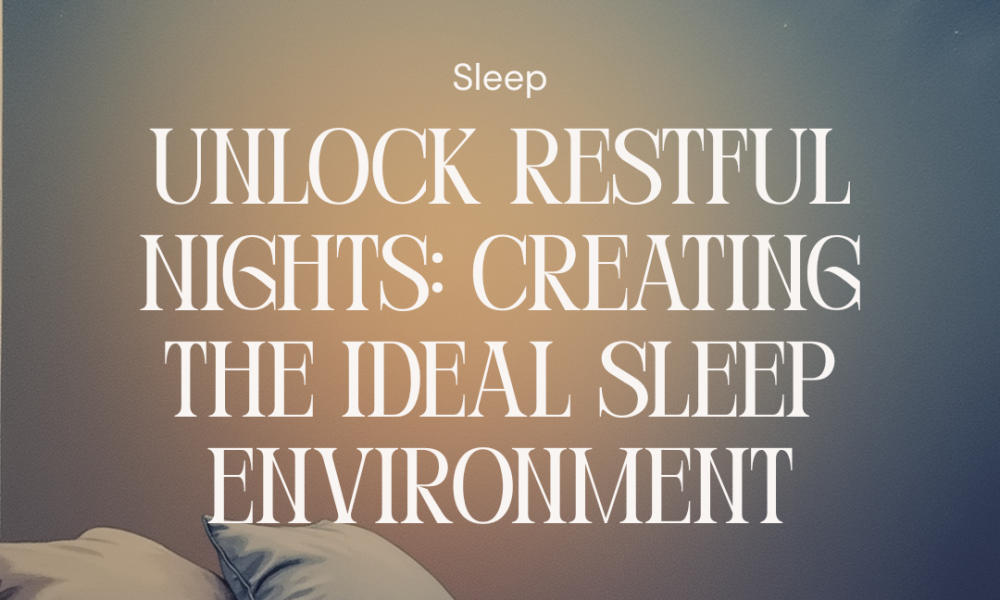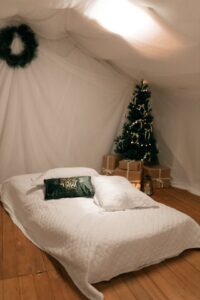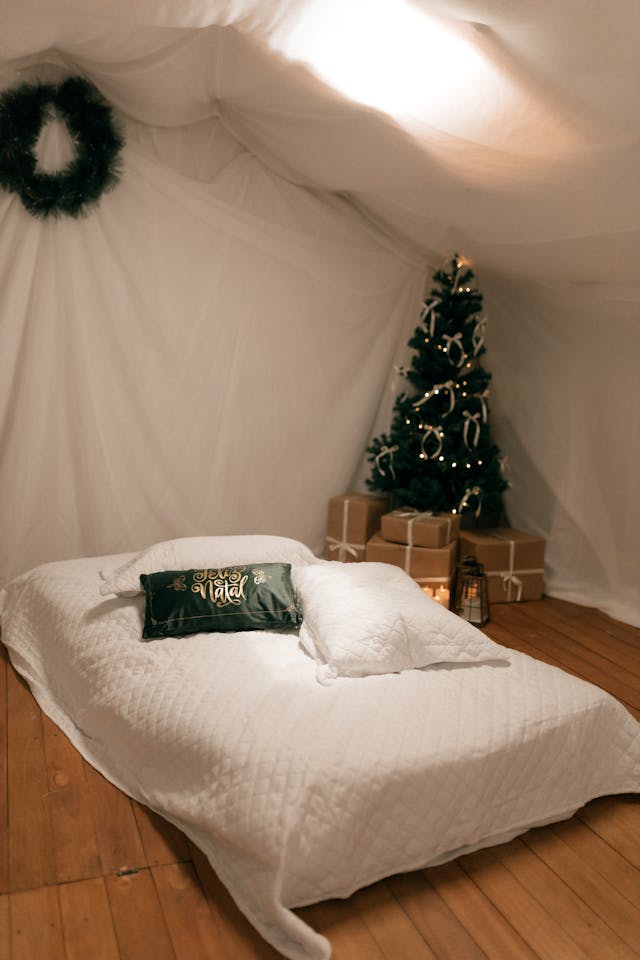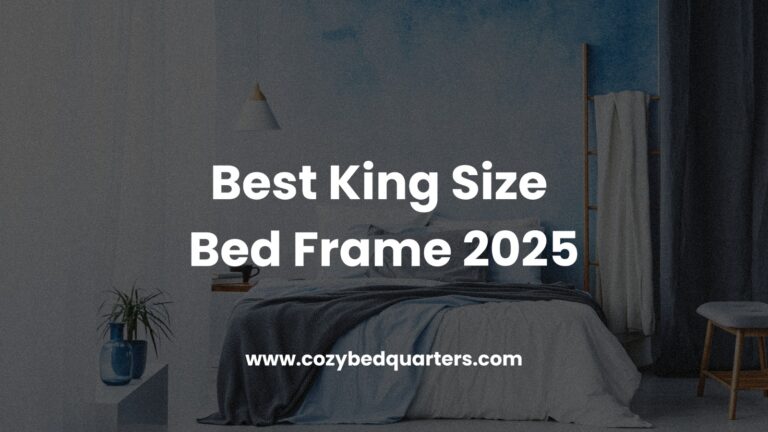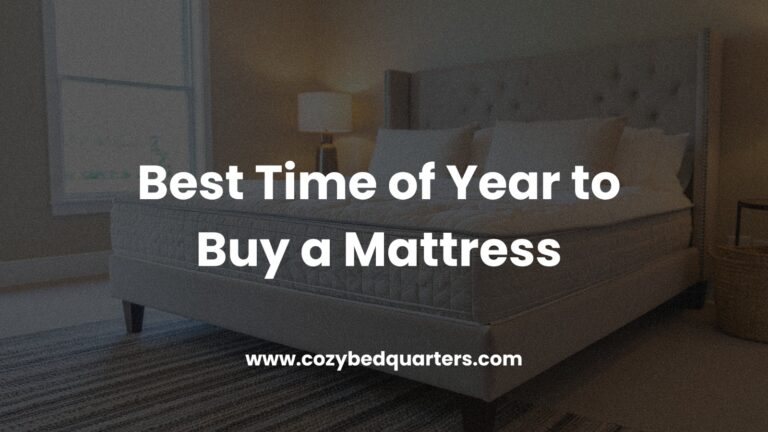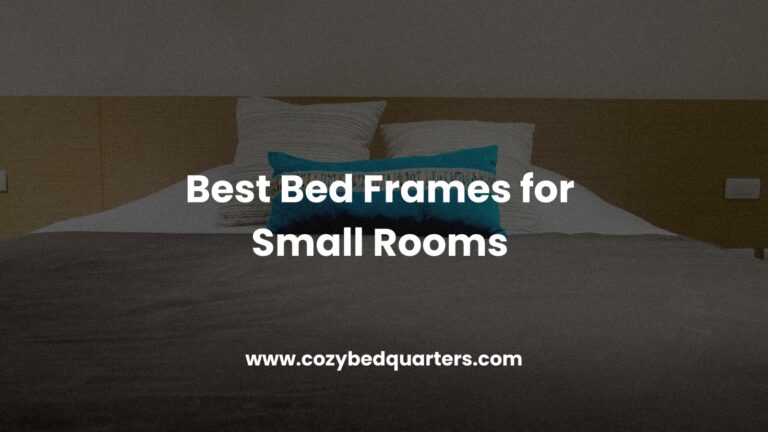Creating the Ideal Sleep Environment for Restful Nights
Discover how to create the ideal sleep environment using smart home technology. From lighting and temperature control to automated routines, these strategies can enhance your sleep quality and overall well-being.
Key Takeaways on Creating the Ideal Sleep Environment
- Creating the ideal sleep environment is crucial for improving sleep quality.
- Smart home technology, such as automated lighting and smart shades, can contribute to a serene sleep space.
- Optimizing temperature and sound through smart thermostats and sound systems helps enhance sleep quality.
- Sleep tracking provides personalized insights to fine-tune your sleep environment.
- Automating your bedtime routine with smart home automation ensures consistency and promotes better sleep.
Welcome to a world where your smart home design can revolutionize your sleep experience. By optimizing your environment, you can enjoy restful nights and wake up more refreshed.
Smart Air Purifiers: Breathing Easier While You Sleep
When it comes to creating the ideal sleep environment, air quality is often overlooked. Clean, allergen-free air can dramatically improve sleep quality. Smart air purifiers use HEPA filters and real-time monitoring to keep your bedroom fresh.
Many devices detect pollen, dust, and VOCs, automatically adjusting to maintain healthy levels. Some even connect with your smart home system for automation. With smart purifiers, you’re not just sleeping—you’re recovering in a healthier space.
Aromatherapy Diffusers: Scents That Soothe
Incorporating calming scents is another smart strategy for creating the ideal sleep environment. Aromatherapy diffusers connected to your home system can release relaxing fragrances like lavender or sandalwood at bedtime.
Schedule your diffuser to turn on before sleep or sync it with sleep tracking devices for optimal timing. These soothing scents psychologically cue your brain that it’s time to rest.
Automated Lighting: Syncing with Your Sleep Cycle
Automated lighting gradually dims in the evening and mimics natural sunrise in the morning, helping regulate your circadian rhythm.
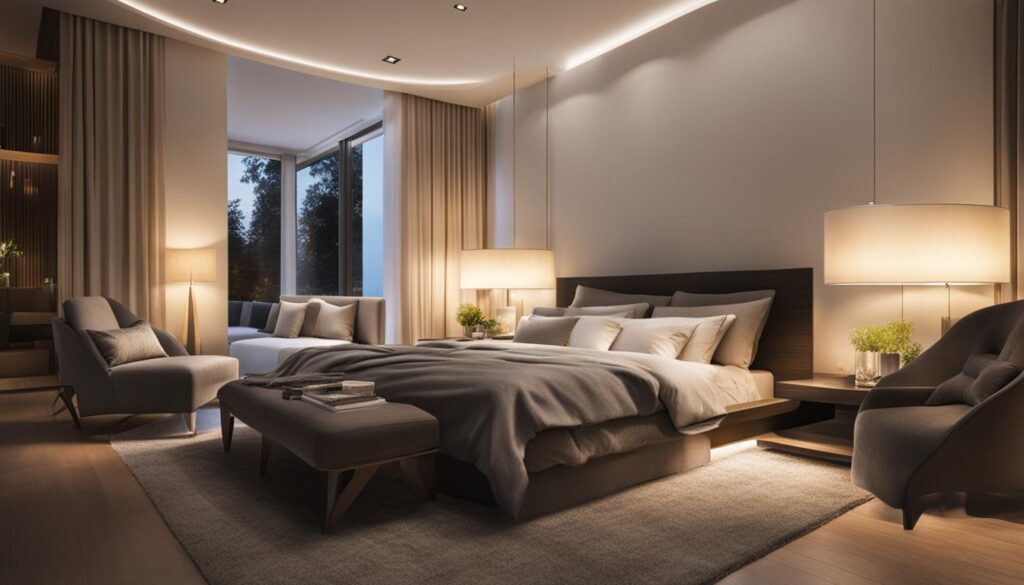
Smart Shades: Light Control for Better Sleep
Darkness is essential for melatonin production and deep sleep. Smart shades block unwanted light and can be automated to align with your sleep schedule.
Benefits of Smart Shades for Sleep:
- Precise light control for deeper rest
- Helps maintain a consistent sleep schedule
- Convenient remote and voice control
Smart Thermostats for Optimal Sleep Temperature
When it comes to creating the ideal sleep environment, temperature is critical. Smart thermostats adjust your room automatically, ensuring your body stays comfortable throughout the night.
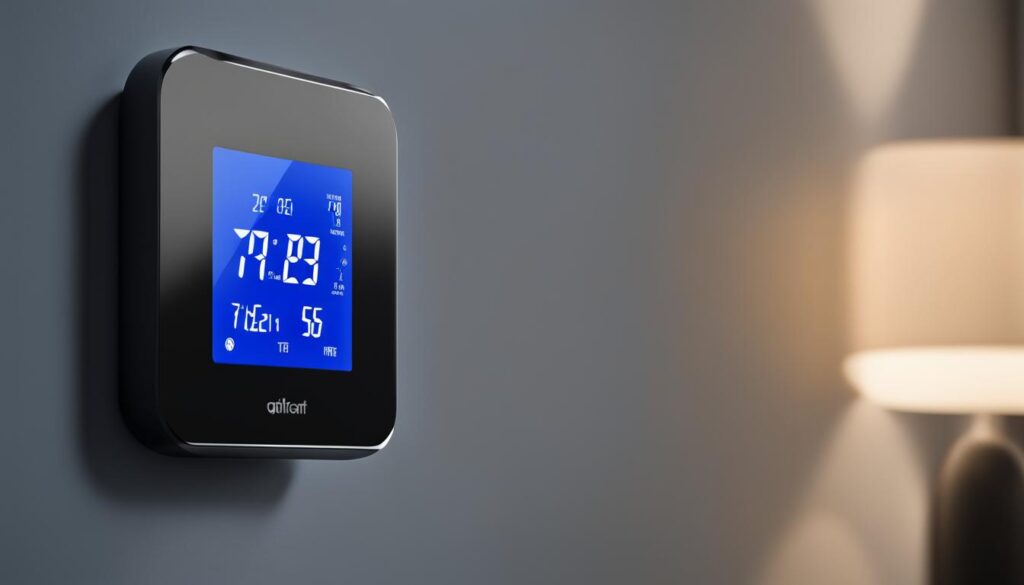
Smart Sound Systems: Your Personal Lullaby
The soothing sounds of gentle melodies can create the perfect ambiance for a restful sleep.
Smart speakers or sound machines can play white noise, nature sounds, or sleep playlists to mask disruptions and create calm.
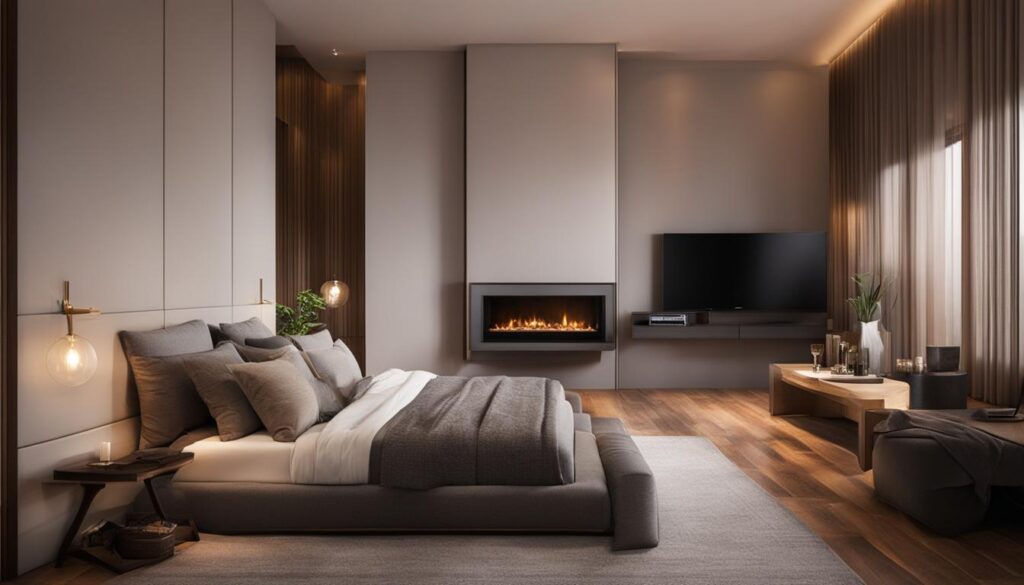
Sleep Tracking: Personalized Sleep Solutions
One of the biggest breakthroughs in smart home tech is sleep tracking. Trackers provide actionable insights, like wake-up times or restless periods, so you can adjust your environment accordingly.
| Sleep Pattern | Recommended Action |
|---|---|
| Waking up often | Adjust lighting and sound |
| Inconsistent schedule | Automate bedtime routines |
| Trouble falling asleep | Use smart shades and calming scents |
Bedtime Routine Automation: Consistency is Key
Smart routines can dim lights, lower the thermostat, and start relaxing music at the same time nightly. This consistency signals to your body that it’s time to wind down, reducing stress and improving sleep quality.
Pairing automation with automated bedtime routines helps you achieve deep rest with minimal effort.
Conclusion
Creating the ideal sleep environment is vital for overall well-being. With smart home technology—automated lighting, shades, thermostats, sound, and aromatherapy—you can transform your bedroom into a restful sanctuary and wake up feeling rejuvenated.
FAQ
How can automated lighting improve sleep quality?
Automated lighting gradually dims before bed and mimics sunrise, helping regulate your natural sleep cycle.
What role do smart shades play in creating a better sleep environment?
Smart shades block disruptive light, keeping your sleep environment dark and supportive of deep rest.
How do smart thermostats contribute to optimal sleep temperature?
Smart thermostats adjust bedroom temperature through the night, keeping your body comfortable for longer sleep cycles.
How can smart sound systems enhance your sleep experience?
Smart sound systems provide calming sounds or white noise, masking disruptions and creating a peaceful atmosphere.
What insights can sleep trackers provide?
Sleep trackers identify sleep cycles, disturbances, and wake patterns, guiding you to improve your environment.
How can smart home automation help maintain a consistent bedtime routine?
Automated routines ensure lights, sounds, and temperature align with your bedtime, creating consistency and better rest.
How does smart home technology contribute to better sleep?
Smart technology enhances comfort and consistency, optimizing every factor of your bedroom for quality rest.
Related reading from Cozy Bed Quarters
- How to Create a Quieter Sleep Environment
- How Blue Light Affects Your Sleep & How to Block It Naturally
- Top Sleep Tracking Devices
Other reading we found popular
- Sleep Hygiene Tips from Sleep Foundation
- How Smart Homes Improve Sleep (Eachnight)
- Best Bedroom Lighting Ideas (The Spruce)
- Smart Bedroom Setups (Apartment Therapy)

